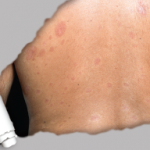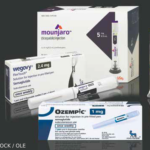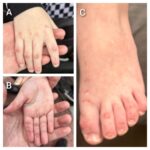Based on research showing improved signs and symptoms of systemic sclerosis in patients taking cilnidipine vs. placebo, the FDA granted orphan drug designation for the agent.

Subcategories:Axial SpondyloarthritisClinical Criteria/GuidelinesGout and Crystalline ArthritisMyositisOsteoarthritis and Bone DisordersOther Rheumatic ConditionsPain SyndromesPediatric ConditionsPsoriatic ArthritisRheumatoid ArthritisSjögren’s DiseaseSoft Tissue PainSystemic Lupus ErythematosusSystemic SclerosisVasculitis

Based on research showing improved signs and symptoms of systemic sclerosis in patients taking cilnidipine vs. placebo, the FDA granted orphan drug designation for the agent.

Nipocalimab, an investigational monoclonal antibody that blocks FcRn and reduces levels of circulating immunoglobulin G (IgG) antibodies, has received the FDA’s breakthrough therapy designation for the treatment of Sjögren’s disease.
Autologous hematopoietic stem cell transplantation (AHSCT) may improve the survival rate of patients with diffuse cutaneous systemic sclerosis (SSc), according to Georges et al. The single-arm clinical trial demonstrated the effectiveness of AHSCT and maintenance therapy. Researchers also identified potential risk factor of AHSCT in patients with low eGFR before transplantation.
The FDA approved an oral solution of colchicine for the prevention of gout flare in adults. Its dosage can be easily adjusted on the basis of patient needs.
Yalamanchili et al. describe how trends in disease-modifying anti-rheumatic drug (DMARD) use have evolved for insured, U.S. patients with juvenile idiopathic arthritis. Overall, the study found that from 2000 to 2022 in this patient population the use of biologic and targeted synthetic DMARDs rose, while the use of conventional synthetic DMARDs declined.

Bryn Nelson, PhD |
Based on decades of data from dietary and other lifestyle interventions, doctors have long known that significant weight loss can be an effective treatment for people who are overweight and have knee osteoarthritis (OA). One meta-analysis showed that OA pain, function and stiffness scores improved by 2% for every 1% in lost weight.1 But the…

Kim Arrey, DtP |
“What can I eliminate from my diet to cure my arthritis?” is the question every client with arthritis asks me. Numerous case reports document patients who achieved lower markers of inflammation and reduced pain and stiffness associated with the removal of one or two food groups from a diet, but historically, no compelling evidence has…

A new study questions whether acetaminophen is a risk-free pain reliever for patients aged 65 and older, including those with osteoarthritis (OA). Although acetaminophen is often touted as an alternative to non-steroidal anti-inflammatory drugs (NSAIDs), such as ibuprofen, a population-based cohort study found it carried an increased risk of peptic ulcers, bleeding and other side…

Eaman Alhassan, MD |
For the 2024 Image Competition, the ACR sought images with educational or remarkable manifestations representing a diverse range of pediatric patients with autoimmune, inflammatory, infectious and malignant drivers of rheumatic disease. Here, we showcase the winning images from North America. Patient Presentation A 3-year-old boy presented with a four-month history of rash and hand blisters….

Catherine Kolonko |
‘Patients with rheumatologic diseases are rightfully concerned about the risk of flares after getting their COVID vaccines, especially after holding immune modulators,’ says says Physician Editor Bharat Kumar, MD, MME, FACP, FAAAAI, RhMSUS. ‘A new study is reassuring that flares are rare, even after holding or discontinuing immune modulators.’ The development of a vaccine for…